Lever-actions in .22 LR are a ton of fun. Here we take a look at some of the top options on the market today.
Designed in 1887, the .22 Long Rifle (LR) is arguably one of the most popular cartridges ever invented, and for good reasons. Of course, other rimfire cartridges were produced, including the .22 Short, .22 Long, .22 Winchester Magnum Rimfire (WMR) and the tiny .17 Hornady Magnum Rimfire (HMR), but I’ll focus on the .22 LR here in lever-action rimfire applications.
This rimfire cartridge has many things going for it from the get-go. First of all, it’s relatively inexpensive and pleasant to shoot. No harsh recoil nor ear-splitting muzzle blast are associated with the .22 LR, although we need hearing protection whenever possible, even with small cartridges. It’s a master at collecting small game, and while it may not be optimal, you can press it into service as a defensive weapon. Federal even offers its Personal Defense Punch Rimfire .22 LR 29-grain load specifically designed for such purposes. Another of the .22 LR’s merits is that it’s chambered in guns similar to those we hunt big game with or carry for personal protection. That adds another excellent option for less expensive live-fire practice to hone our shooting skills.
One of the most popular rifle actions ever devised is the classic lever-action. It provides the shooter with lightning-fast follow-up shots. For those still needing convincing, we can easily watch videos of accomplished shooters running their lever-action rimfire rifles with unbelievable speed and accuracy.
Uniquely American, the lever gun has been a part of the shooting scene for over 160 years. The longevity of manufacturing rifles with this type of action and the fact that gun companies still produce them and continue to add them to their lines means one thing: Shooters want them. If companies couldn’t build, sell and make money by providing lever-action rifles, they wouldn’t do it.
Several companies are currently offering multiple versions of .22 LR lever-actions. From historic designs like the Henry 1866 Yellowboy to modern renditions of lever guns that have gained brand recognition from makers like Browning, Chiappa, Rossi and others, the lever-action .22 is as popular as ever. Let’s look at the current models available for today’s shooter.
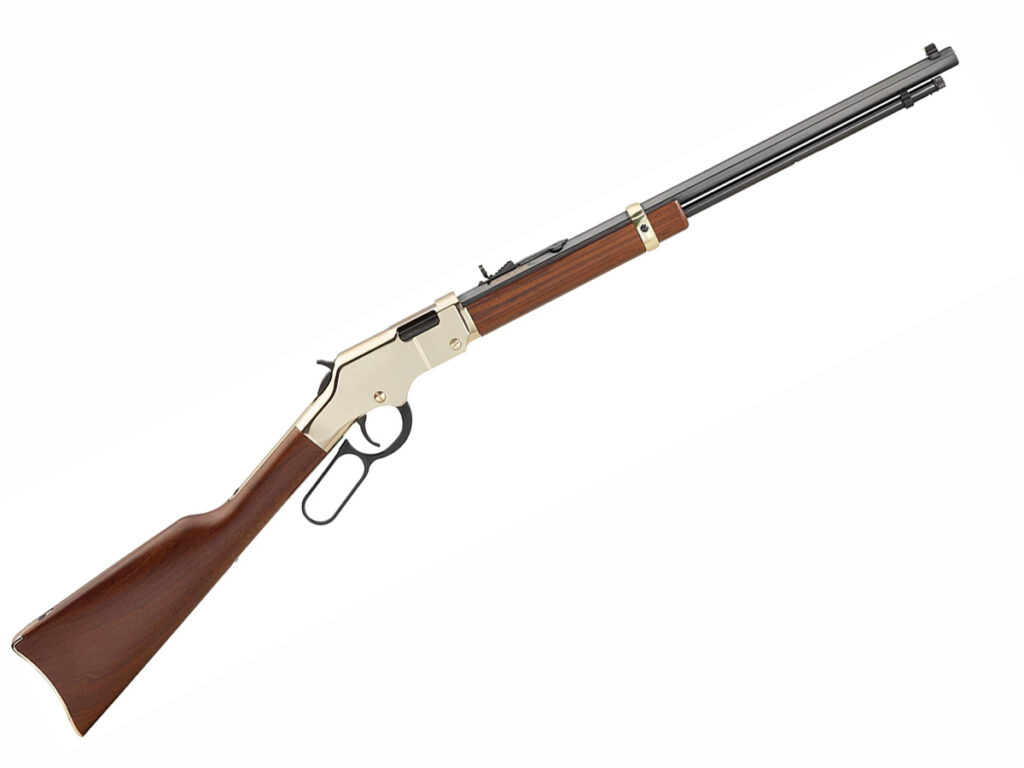

Cimarron Firearms offers its 1866 Yellowboy carbine with a 19-inch round barrel or 24-inch octagon-barreled Sporting Rifle chambered in .22 LR. Staying within traditional lines, Taylor’s & Company catalogs the 1866 Carbine with a 19-inch barrel and the rifle version with a 24.25-incher. Taylor’s also sells the Uberti Scout with a 19-inch barrel.
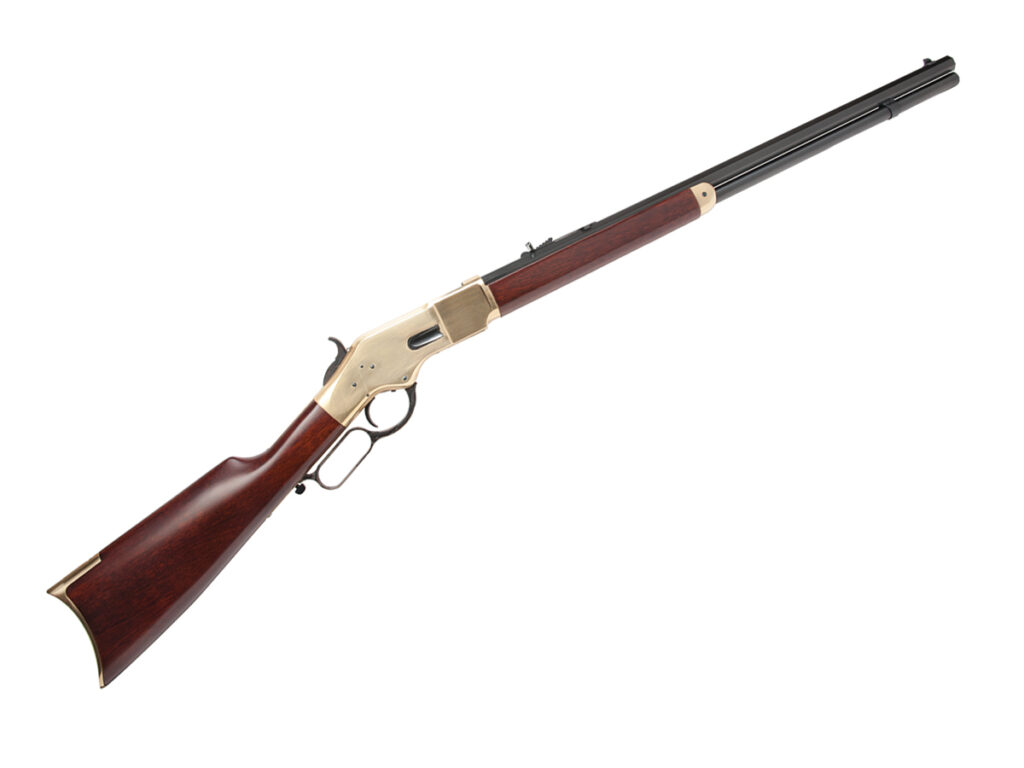

Browning’s BL-22 comes in numerous configurations, Field Grades I and II, Micro Midas, Grade I and Grade II. What does all of this mean? You can have the top-shelf, fast-cycling, accurate lever-action in a couple of different sizes with optional barrel lengths of 16.25 to 20 inches and even a 24-inch octagonal barrel. The receiver finish options are satin nickel or blue.
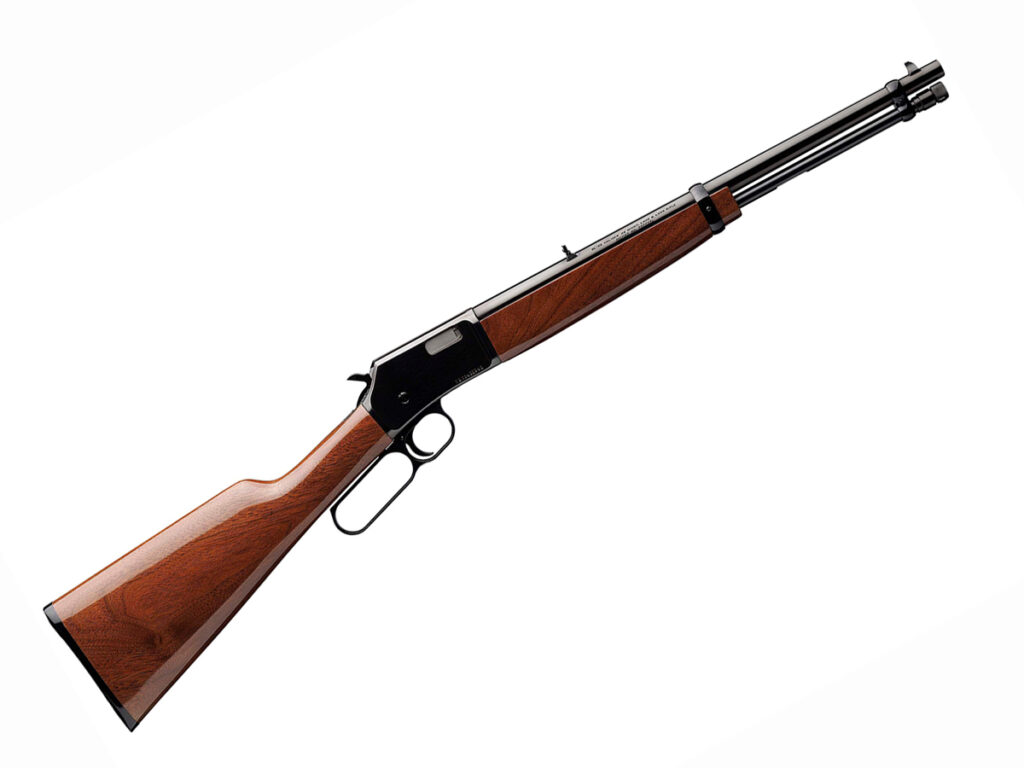

At last count, Henry Repeating Arms offers more than 30 different lever-action rimfires. From its Classic Lever Action .22 Model H001 to carbines, Octagon Frontiers, Small Game Rifles and Carbine, Limited Edition, and Tribute guns, Henry has a vast variety from which to choose.
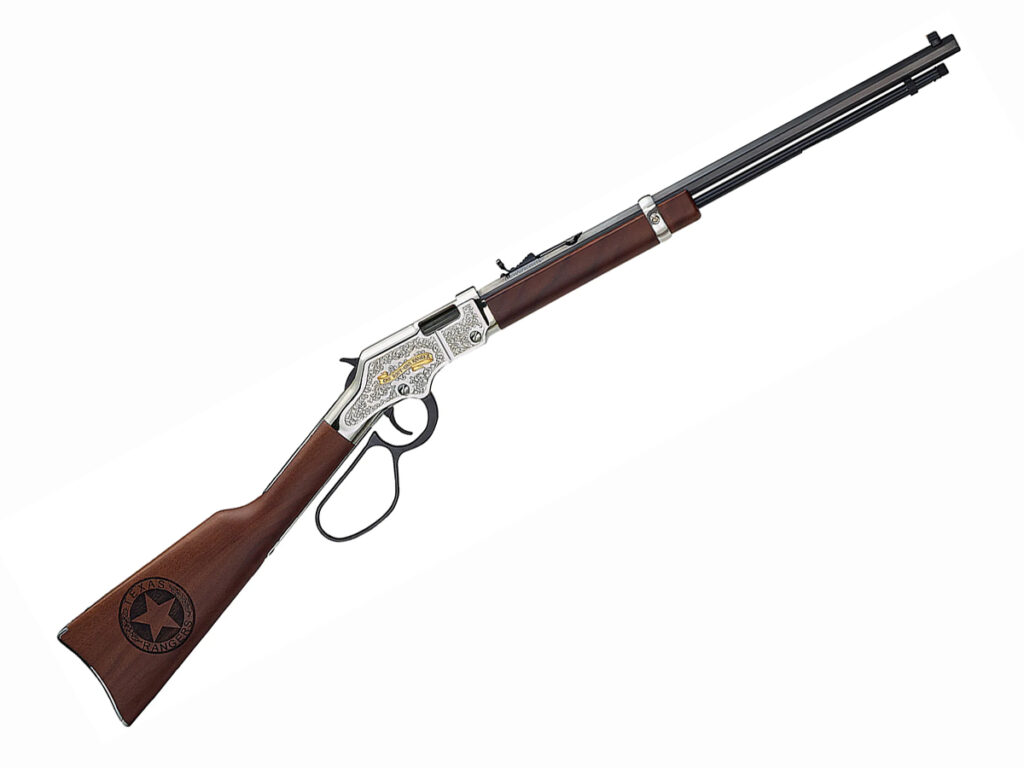

Heritage Manufacturing Company’s Settler Series of lever-actions are new to the shooting game, with three different models available from the 20-inch Settler to the 16-inch Compact and down to the 12.5-inch Mares Leg. These guns feature polished black oxide barrels, wood stocks and attractive simulated case-hardened receivers.
Rossi’s Rio Bravo line of .22s are good-shooting, affordable lever guns. These 18-inch carbines come in matte black and wood, PVD gold and wood, Cerakote gold and wood or the tactical-looking polymer and black.
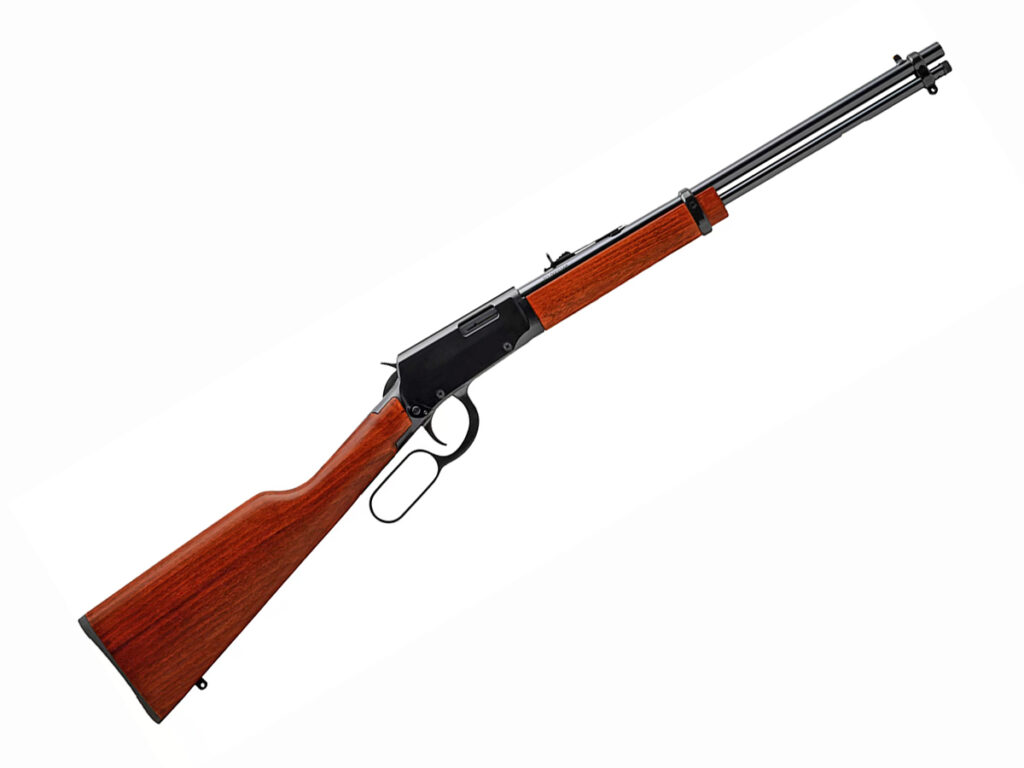

Chiappa Firearms has several versions of its takedown LA322 lever-action .22—a straight grip blued and wood model with an 18.5-inch barrel, the matte-chrome Kodiak Cub, and the Take Down Deluxe with a curved lever and hand-oiled walnut stock and forearm.


Hands-On Experience
Henry provided the H001T with a hefty 20-inch octagonal barrel that balances nicely. Of course, the action was smooth, as all Henrys are, and the trigger broke at 3 pounds. The semi-buckhorn rear sight with a white diamond in the bottom contrasted nicely with the brass bead front sight.
The wood-to-metal fit and finish on the Henry rifle are excellent, with a bit of grain in the darkly stained walnut stock and forearm. The Henry holds 16 rounds of .22 LR, and the barrel is marked .22 S/L/LR. It holds 21 rounds of .22 Shorts.
Rossi sent its brass-framed Rio Bravo Gold. The action is smooth on the Rossi, but this particular rifle has just a bit of catch as the nose of the bullet goes into the chamber. This did not cause any issues; you feel a slight increase in action tension as the cartridge begins to seat into the chamber of the 18-inch round barrel. The fit and finish are good, and the wood stock has some grain, which I like. The trigger broke at a crisp 4 pounds with about a quarter inch of take-up or slack before you hit the trigger’s tension. By design, a quarter-inch gap between the lever and grip of the stock takes some getting used to; it feels slightly different from other lever guns I’m familiar with. However, you get used to it in no time. The rear sight is buckhorn with a brass bead front, and the rifle holds 15 rounds of .22 LR.
I carried this little rifle while working livestock on the Harkins Ranch in hopes of shooting it during an afternoon break, which is precisely what we did. For starters, 12-year-old Sutton ran the Rossi through several rounds of steel Go Fast targets he had set up for a speed competition at 30 feet with two square targets on each side of a round “time-stopping” target. He competes with a slick semi-auto .22 LR rifle, but you wouldn’t know it by the way he ran the Rossi lever-action like a pro. Sutton, his dad Jase, and I alternated running this course for time and naturally gravitated to shooting at long-range steel on the remote range. A steel ram, turkey, pig, and chicken soon took a beating at 50 yards, so we moved to an old scuba tank at 100. Next came the 200-yard steel, small-man-silhouette that we hit repeatedly by holding the front bead on top of the rear sight notch and focusing the bead on the head of the distant target. The pop of the .22 LR going off was answered after a slight pause by a “ding” of the tiny bullet making contact with the metal.
My friend Jim Crouch at Dodson Guns in Alpine graciously allowed me to include his previously unfired Browning BL-22 Grade II in this article. It is high-end and has a beautiful black walnut stock and gloss-finished forearm, with an engraved receiver and a 20-inch barrel.
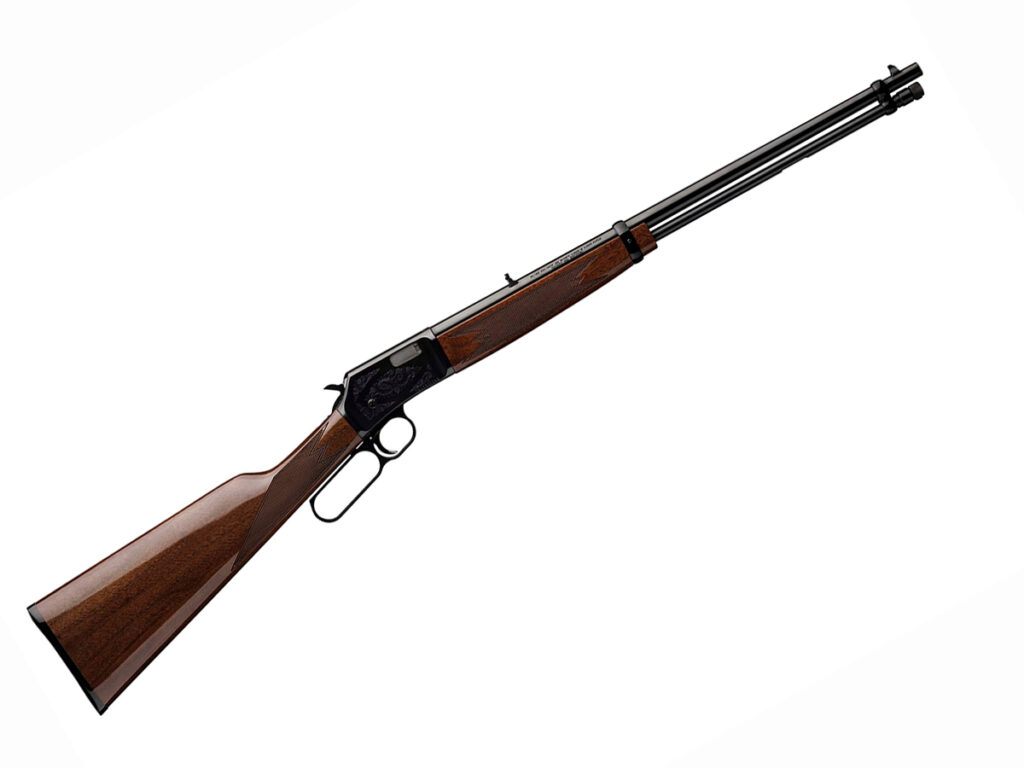

The 33-degree lever throw design of the BL-22 enables you to run the lever with a simple flip of the hand. It’s fast, and it’s accurate. The trigger breaks at a crisp 6 pounds after a slight take-up. We could cover each group with a quarter; most were nickel-sized or smaller. For fun, I ran several mag tubes rapid-fire on a small-torso steel plate at 25 yards, and it’s incredible how fast one can run this rifle.
Taking all three rifles to the range for accuracy testing, I set up my target stand at 15 yards and used 1-inch orange Rangemaxx target stickers on a white poster board as my aiming point. I fired five shots each from a sitting, sandbag rest with Remington’s 40-grain Thunderbolt and 36-grain Golden Bullet, CCI 40-grain Target Mini Mags, Eley 40-grain Club, Browning’s 40-grain Pro 22 and Winchester’s 40-grain Power-Point.
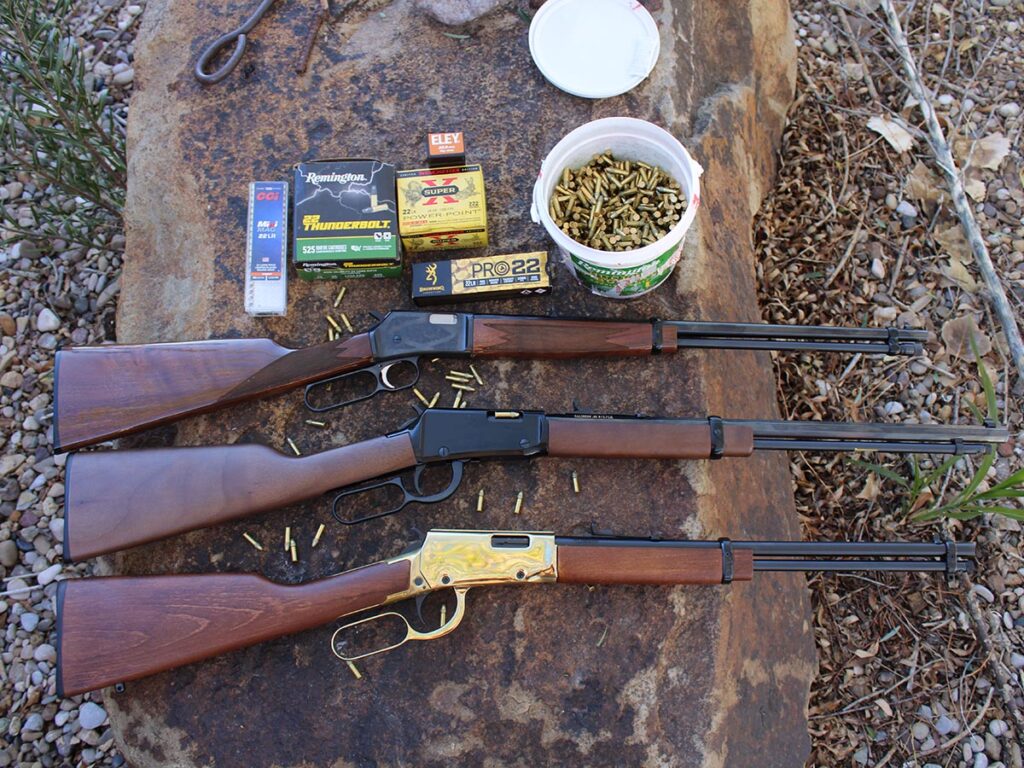

Each of these rifles performed well with all brands of ammunition, with some groups a ragged hole. The largest groups were made by one-round-self-induced flyers by the shooter.
Each lever-action could likely shoot better than I can shoot them, and each provided good-to-excellent accuracy with the six loads tested. The Browning BL-22’s best two groups measured 0.39 of an inch with Winchester Power-Point and Browning Pro22 ammunition. Out of all rounds tested, this rifle averaged a group size of .43 inch. That’s six different cartridges from four different manufacturers. Browning’s BL22 is the top-shelf lever gun in the trio. This quality lever-action fit, finish, and engraving will set you back around $740.
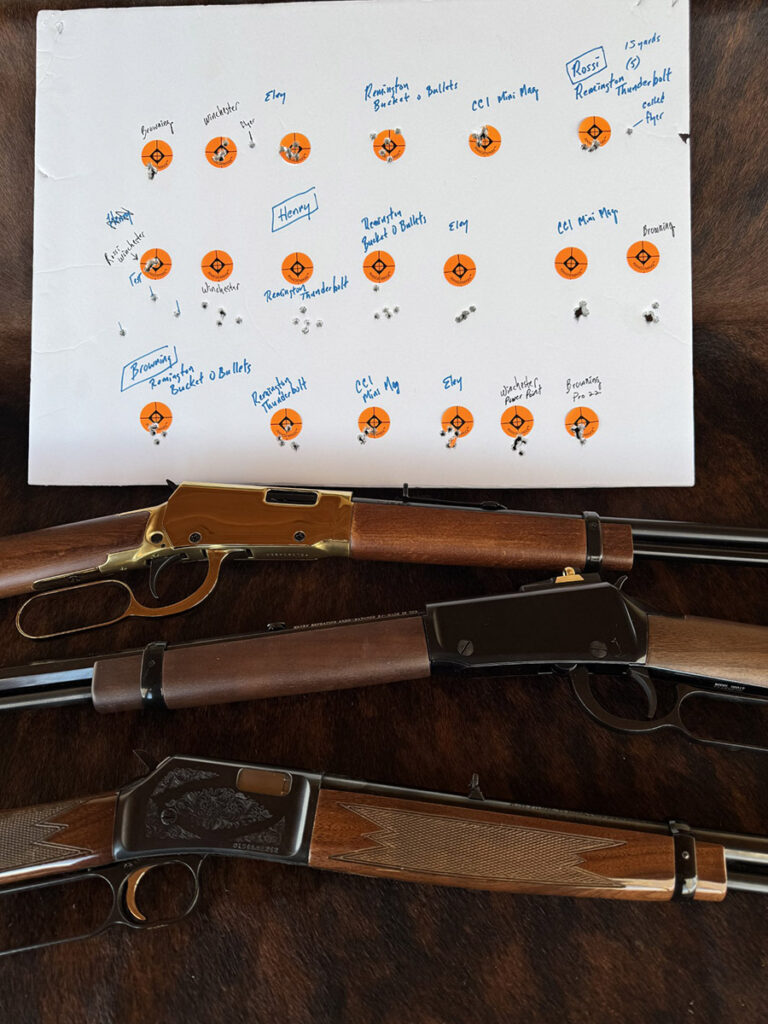

The Henry stacked the CCI Mini Mags into 0.34 inch, and the Browning Pro22 load was close behind at 0.43-inch groups with one round just slightly out of the cluster, likely pulled by yours truly. The average for all loads fired was 0.64 inch. The Henry Octagon Frontier Model retails in the neighborhood of $400 and sits comfortably as a mid-price, quality lever-action .22 LR.
The most economical of the lot is the Rossi Rio Bravo Gold. This rifle retails around $350, but don’t let the lower price tag dissuade you from considering it a worthy addition to your armory. The Rio Bravo produced impressive groups, with the smallest measuring 0.22 inch with the Browning Pro22 ammunition—the smallest group of the three rifles tested—and the average of six groups was just 0.42 of an inch. So, the most cost-effective .22 LR in the mix shot on par with the high-end lever gun; how’s that for a bargain?
| FIREARM | LOAD | ACCURACY (IN.) |
| Browning BL-22 | Remington Bucket O’ Bullets | .42 |
| Browning BL-22 | Remington Thunderbolt | .57 |
| Browning BL-22 | CCI Mini Mag | .41 |
| Browning BL-22 | Eley | .42 |
| Browning BL-22 | Winchester Power-Point | .39 |
| Browning BL-22 | Browning Pro22 | .39 |
| Henry Octagon Frontier | Remington Bucket O’ Bullets | .88 |
| Henry Octagon Frontier | Remington Thunderbolt | .68 |
| Henry Octagon Frontier | CCI Mini Mag | .34 |
| Henry Octagon Frontier | Eley | .47 |
| Henry Octagon Frontier | Winchester Power-Point | 1.06 |
| Henry Octagon Frontier | Browning Pro22 | .43 |
| Rossi Rio Bravo Gold | Remington Bucket O’ Bullets | .76 |
| Rossi Rio Bravo Gold | Remington Thunderbolt | .33 |
| Rossi Rio Bravo Gold | CCI Mini Mag | .37 |
| Rossi Rio Bravo Gold | Eley | .43 |
| Rossi Rio Bravo Gold | Winchester Power-Point | .43 |
| Rossi Rio Bravo Gold | Browning Pro22 | .22 |
All of this boils down to one thing. No matter what your gun budget allows, we have excellent options to own a good, accurate lever gun in .22 LR. Understandably, fit and finish vary slightly between the manufacturers and each gun is priced accordingly. Some low-cost guns might have cast or even synthetic parts here and there, and the wood quality goes up with price. The fact remains that no matter the cost, each of these lever-action rimfires shot and functioned well.
Finishing up with the business at the shooting bench, I loaded up the rifles for some fun, rapid-fire shooting on steel from 50 to 100 yards. I never experienced a glitch with any of the guns or ammunition, and it took little effort to keep them ringing plates, even at football field distance.
Today’s production .22 LR lever-actions range in price from under $300 to over a grand. You can choose from various brands and models and select the appropriate rifle to fit your needs, wants and budget. Even the most economical guns offer good accuracy, function and reliability, ensuring shooters have opportunities to own and shoot quality lever-action .22 rifles at any cost. There are also options for those who admire the finer things in life like high-end, figured walnut and engraving. Now grab a pocketful of ammo, your favorite .22 lever-action and head to the range!
Editor’s Note: This article is an excerpt of Lever-Actions: A Tribute to the All-American Rifle.
More On Rimfires:
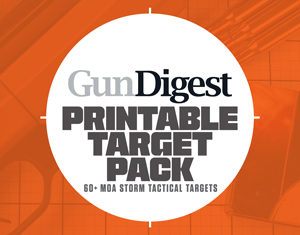

Next Step: Get your FREE Printable Target Pack
Enhance your shooting precision with our 62 MOA Targets, perfect for rifles and handguns. Crafted in collaboration with Storm Tactical for accuracy and versatility.
Subscribe to the Gun Digest email newsletter and get your downloadable target pack sent straight to your inbox. Stay updated with the latest firearms info in the industry.
Read the full article here


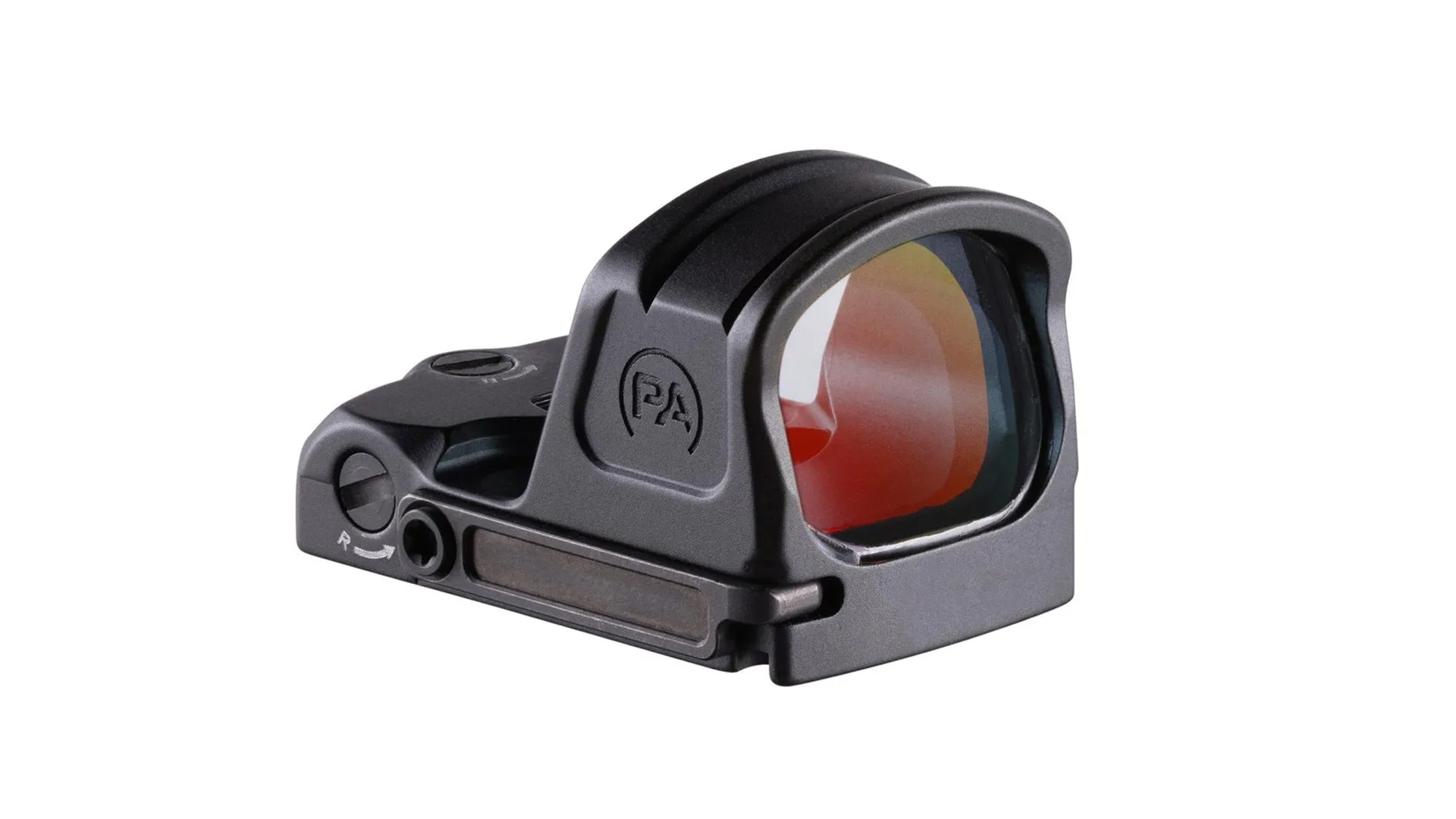
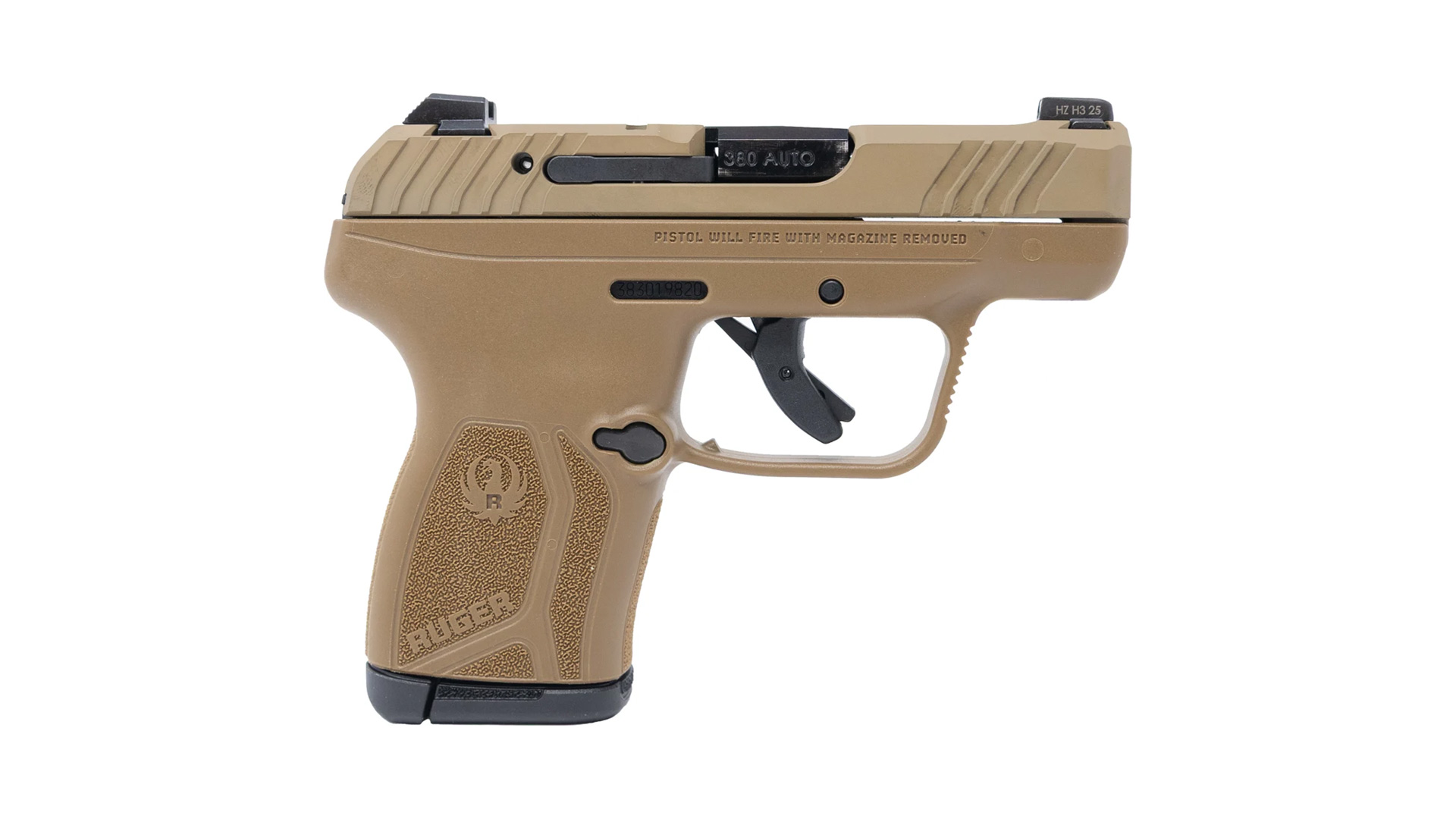

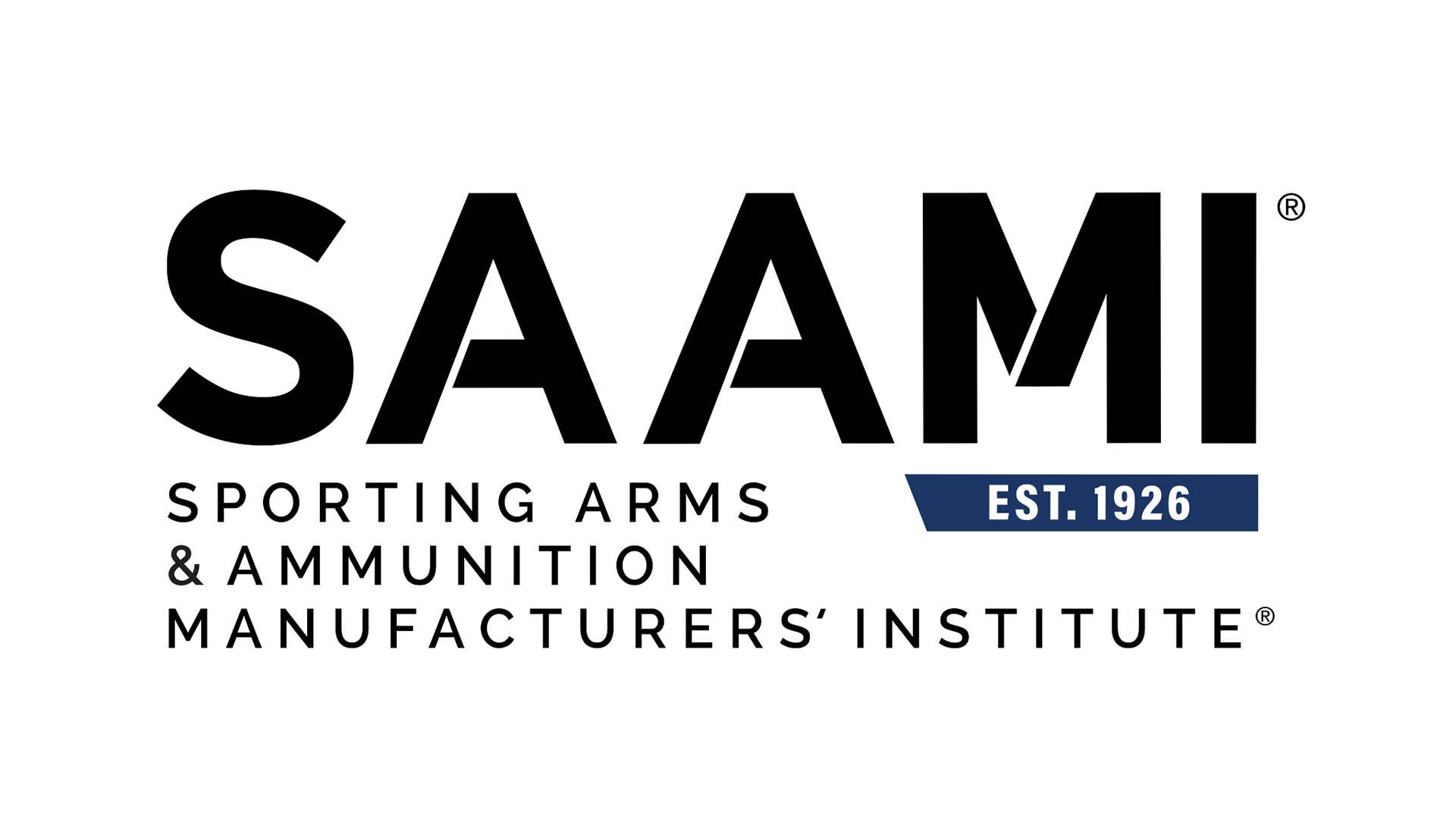
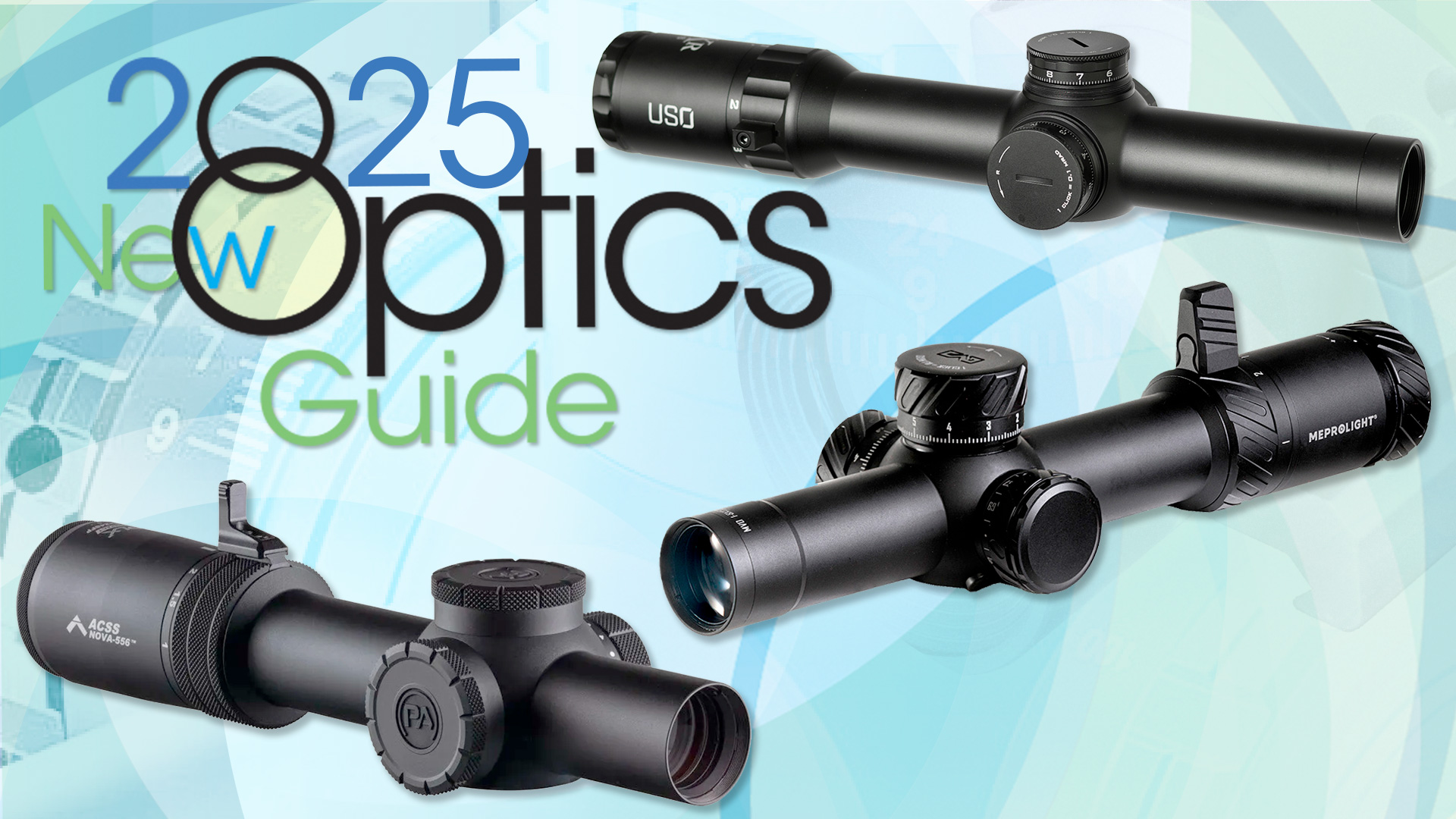
Leave a Reply